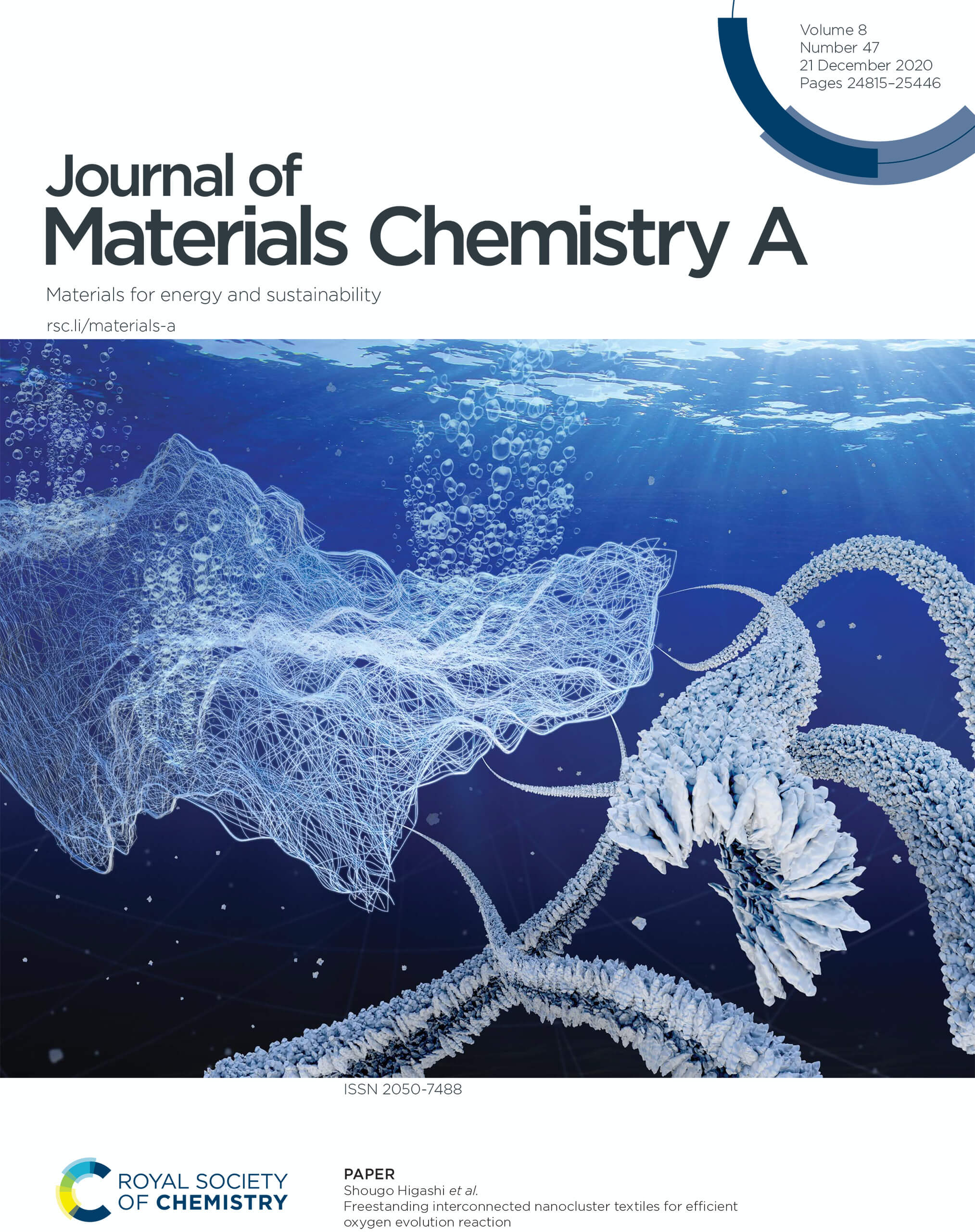論文雑誌「Journal of Materials Chemistry A」のカバーピクチャーを制作しました[豊田中央研究所]
弊社で制作しました豊田中央研究所 東 相吾様のカバーアートが
イギリスの王立化学会発行の学術雑誌 Journal of Materials Chemistry A
2020年12月号に選ばれました。

Client
株式会社豊田中央研究所
東 相吾 様
東 相吾 様
Journal
Journal of Materials Chemistry A
21 December 2020, Issue 47, Page 24815 to 25446 Link
21 December 2020, Issue 47, Page 24815 to 25446 Link
Abstract
Nanocatalysts have high surface area-to-volume ratios, which are beneficial for minimizing material usage and achieving high catalytic activity. However, preparing a catalyst layer that consists of nanoparticles, involves several costly steps and requires a well-controlled and safe production line. Herein, we report the fabrication of a free-standing support-free textile catalyst comprised of randomly oriented rutile IrO2 crystalline clusters with diameters in the range 1–3 nm, which are connected through dense crystalline domain boundaries. This textile catalyst can be prepared by combining two industrially established techniques, sputtering and electrospinning, which neither require an environmentally controlled costly synthesis, cleaning, and customized collecting processes for nanomaterials, nor highly engineered transferring processes to prepare the catalyst layer. By tuning the curvature of templated water-soluble polymer nanofibers, the highest mass activity and turnover frequency of the oxygen evolution reaction (OER) were achieved for non-doped or pure IrO2. The high OER activity was attributed to the presence of thermodynamically unstable surfaces, which hold large numbers of undercoordinated Ir atoms.
Freestanding interconnected nanocluster textiles for efficient oxygen evolution reaction
Shougo Higashi*, Takashi Tachikawa, Keiichiro Oh-ishi, Keisuke Shigetoh, Kensuke Takechia and Atsushi Beniya
J. Mater. Chem. A, 2020,8, 25061-25072
Link
Nanocatalysts have high surface area-to-volume ratios, which are beneficial for minimizing material usage and achieving high catalytic activity. However, preparing a catalyst layer that consists of nanoparticles, involves several costly steps and requires a well-controlled and safe production line. Herein, we report the fabrication of a free-standing support-free textile catalyst comprised of randomly oriented rutile IrO2 crystalline clusters with diameters in the range 1–3 nm, which are connected through dense crystalline domain boundaries. This textile catalyst can be prepared by combining two industrially established techniques, sputtering and electrospinning, which neither require an environmentally controlled costly synthesis, cleaning, and customized collecting processes for nanomaterials, nor highly engineered transferring processes to prepare the catalyst layer. By tuning the curvature of templated water-soluble polymer nanofibers, the highest mass activity and turnover frequency of the oxygen evolution reaction (OER) were achieved for non-doped or pure IrO2. The high OER activity was attributed to the presence of thermodynamically unstable surfaces, which hold large numbers of undercoordinated Ir atoms.
Freestanding interconnected nanocluster textiles for efficient oxygen evolution reaction
Shougo Higashi*, Takashi Tachikawa, Keiichiro Oh-ishi, Keisuke Shigetoh, Kensuke Takechia and Atsushi Beniya
J. Mater. Chem. A, 2020,8, 25061-25072
Link
